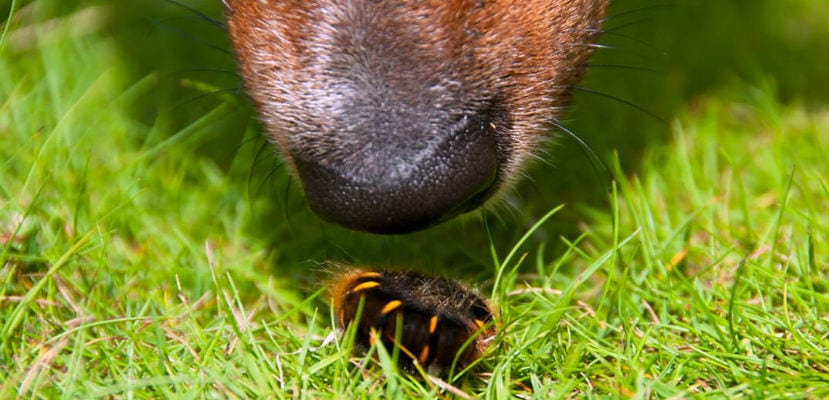
As spring approaches, our pets need certain attention according to this season. Many of them refer to insects. This time we focus on the famous pine processionary caterpillar, highly toxic to dogs. We analyze their behavior and summarize some measures we can take to prevent their attack.
First of all, we must know the biological cycle of this insect. This is one of the first stages of development of the Thaumetopoea pityocampa, a common moth in warm areas. It lays its eggs in trees; when the Caterpillars At the beginning of spring, they descend and walk along the ground until they find the optimal place to bury themselves. Once there, they transform into chrysalis, and later into nocturnal butterflies, which will live for only 24 hours.
The danger of these caterpillars lies in the toxic power of the hairs that cover their body. These contain a substance called thaumatopenia which, when in contact with the skin or mucous membranes, causes serious symptoms such as inflammation, rashes, allergies, vomiting, seizures, etc., which can become fatal if we do not take measures quickly. For this reason we must take extreme precautions with respect to our pet.
It is enough to touch a processionary with a leg to suffer these symptoms, as there will be a strong itching on the skin that the dog will try to soothe with licks, transferring the infection to the oral cavity. It is even more serious if the animal licks or bites the insect directly, which will cause intense pain in the area and a strong throat inflammation. In any case, it is absolutely imperative that a veterinarian attends urgently to our dog to avoid that his organism is totally affected.
As we can see, the best preventive measure to take is prevent the dog from approaching these caterpillars. Something that is not always easy, since their way of moving tends to attract the attention of other animals, so it is advisable to avoid areas with poor visibility and always walk our pet on a leash. In addition, experts recommend following these steps:
- Do not walk through areas with pines and cedars during the risk season (between February and April).
- If we have a garden, it would be convenient to go to a specialized company to carry out preventive treatments between September and December.
- Install traps for caterpillars in trees. We can glue a hard plastic that surrounds the perimeter of the tree, filling it with water so that the caterpillars that come down from the tree fall into it and drown.
- Eliminate egg pockets, except those that are in their terminal phase, as this could make the problem worse. They must be cut one by one, watering them previously to reduce their effect in case of contact with the skin. It is essential to use gloves and glasses, avoiding doing so when it is windy and ensuring that the nests do not fall abruptly and break. After that, we must burn them.
- Find the nesting areas, dig them up and remove the caterpillars. We will find them under small mounds of removed sand, approximately 15 or 25 cm in diameter.
- Apply chemical treatments to fumigate them. It should be done in early fall, when the caterpillars are still in a developmental phase where they can be attacked by insecticides.
- In our garden, promote the existence of natural predators like birds. We will achieve this by installing bird feeders as a claim.
- Inform municipal authorities in case of an accident related to the tracks. We can call the local police or the environment department of the local council. In Madrid, we can communicate it to the Department of Urban Trees (General Directorate of Green Heritage; Environmental Government Area. Tel: 91 588 01 84 - 91 588 59 65).